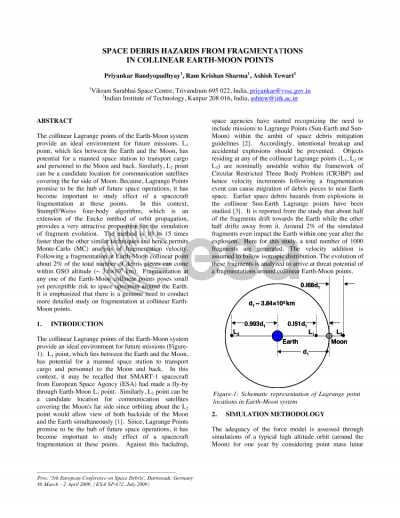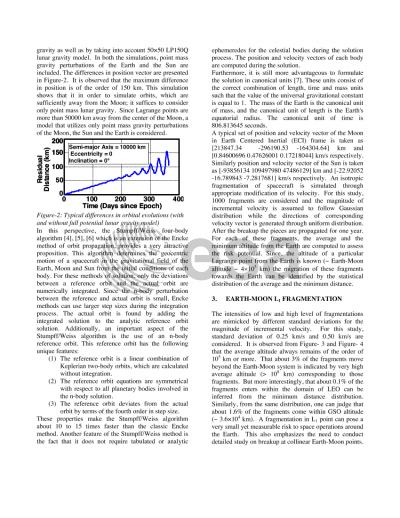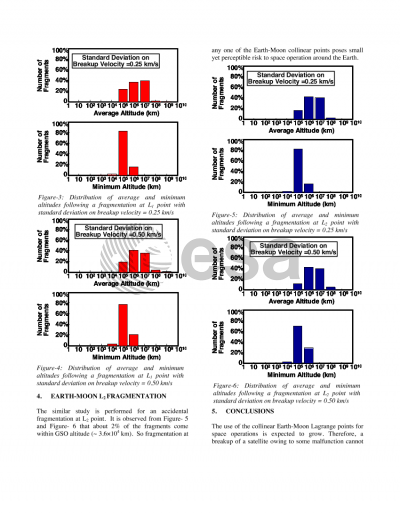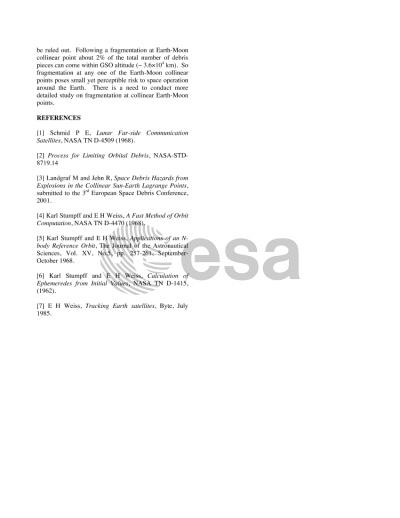Document details

Abstract
The collinear Lagrange points of the Earth-Moon system provide an ideal environment for future missions. L1 point, which lies between the Earth and the Moon, has potential for a manned space station to transport cargo and personnel to the Moon and back. Similarly, L2 point can be a candidate location for communication satellites covering the far side of Moon. Because, Lagrange Points promise to be the hub of future space operations, it has become important to study effect of a spacecraft fragmentation at these points. In this context, Stumpff/Weiss four-body algorithm, which is an extension of the Encke method of orbit propagation, provides a very attractive proposition for the simulation of fragment evolution. The method is 10 to 15 times faster than the other similar techniques and hence permits Monte-Carlo (MC) analysis of fragmentation velocity. Following a fragmentation at Earth-Moon collinear point about 2% of the total number of debris pieces can come within GSO altitude (~ 3.6×104 km). Fragmentation at any one of the Earth-Moon collinear points poses small yet perceptible risk to space operation around the Earth. It is emphasized that there is a genuine need to conduct more detailed study on fragmentation at collinear Earth- Moon points.
Preview





